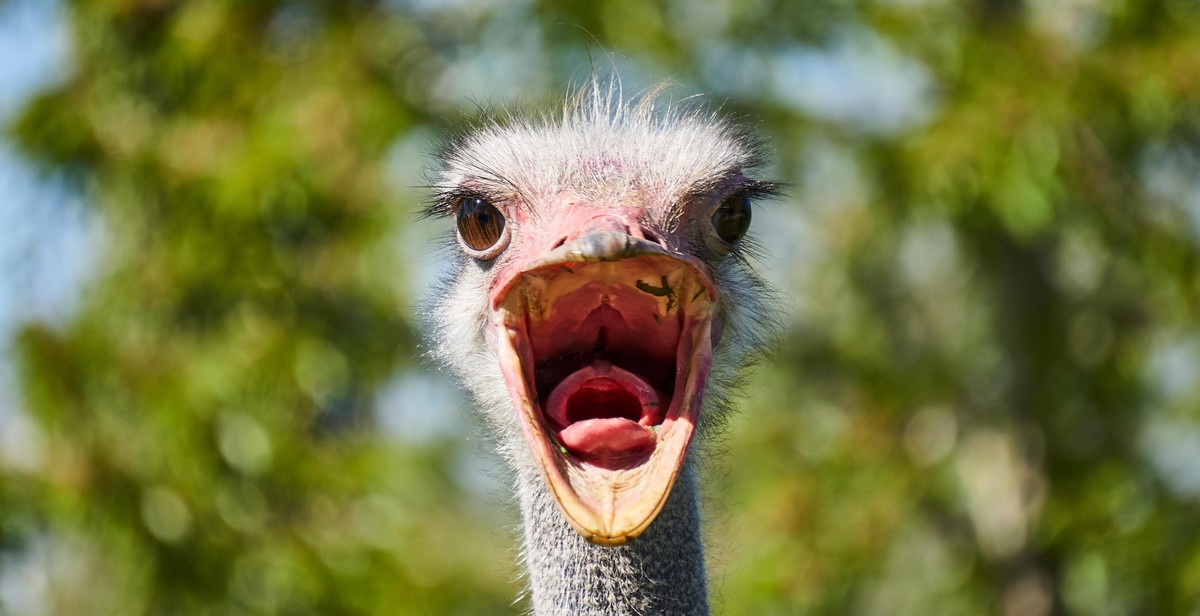How to Identify Different Ostrich Species: Distinguishing Characteristics and Habitats
If you are an ostrich enthusiast or a wildlife lover, you might be interested in learning how to identify different ostrich species. Ostriches are the largest birds in the world and are native to Africa. They are flightless birds and have a unique appearance that makes them easily recognizable. There are four different ostrich species, and each one has its own set of distinguishing characteristics and habitats. In this article, we will explore the different ostrich species and how to identify them.
The Four Ostrich Species
There are four different ostrich species:
- The Common Ostrich
- The Somali Ostrich
- The Masai Ostrich
- The Southern Ostrich
Each of these species has its own unique characteristics that set them apart from each other. By learning these characteristics, you can easily identify which ostrich species you are observing.
Distinguishing Characteristics
Some of the distinguishing characteristics that you can use to identify different ostrich species include:
- Size
- Feather coloration
- Neck and leg coloration
- Feather density
- Facial features
Habitats
Each ostrich species has its own preferred habitat, which can also help you identify which species you are observing. Understanding the different habitats can also give you a better appreciation of the ostrich’s natural environment.
| Ostrich Species | Preferred Habitat |
|---|---|
| The Common Ostrich | Savannah and grasslands |
| The Somali Ostrich | Semi-desert and arid regions |
| The Masai Ostrich | Grasslands and open plains |
| The Southern Ostrich | Desert and semi-desert regions |

Physical Characteristics of Ostriches
Size and Weight
Ostriches are the largest living birds in the world, with males reaching an average height of 8 feet (2.4 meters) and females reaching an average height of 7 feet (2.1 meters). They are also very heavy birds, with males weighing up to 320 pounds (145 kilograms) and females weighing up to 250 pounds (113 kilograms).
Feathers and Coloration
Ostriches have unique feathers that are distinct from other birds. Their feathers are soft and downy, with long, loose barbs that lack the interlocking hooks that keep most bird feathers together. They have a distinctive black-and-white plumage, with males having black feathers and females having brownish-gray feathers. The feathers on their wings and tail are also distinct, with white tips and black bases.
Legs and Feet
The legs and feet of ostriches are also unique. They have two toes on each foot, with the larger toe having a sharp claw that can be used for defense. Their legs are incredibly powerful, allowing them to run at speeds of up to 45 miles per hour (72 kilometers per hour). Their long legs also help them to see over tall grasses and bushes in their habitats.
| Characteristic | Males | Females |
|---|---|---|
| Height | 8 feet (2.4 meters) | 7 feet (2.1 meters) |
| Weight | Up to 320 pounds (145 kilograms) | Up to 250 pounds (113 kilograms) |
| Feather Coloration | Black | Brownish-gray |
| Number of Toes | 2 | 2 |
| Running Speed | Up to 45 miles per hour (72 kilometers per hour) | Up to 45 miles per hour (72 kilometers per hour) |
In conclusion, ostriches are fascinating birds with unique physical characteristics that set them apart from other birds. Their large size, distinctive feathers, and powerful legs and feet make them easy to identify in their natural habitats.

Types of Ostriches
Ostriches are one of the largest birds in the world and are found in different parts of Africa. There are three main types of ostriches, each with unique characteristics and habitats.
1. Common Ostrich
The Common Ostrich, also known as the African Ostrich, is the largest and most common species of ostrich. They are found in savannas and open grasslands in various parts of Africa, including Kenya, Tanzania, and South Africa. They can grow up to 9 feet tall and weigh over 300 pounds. The males have black feathers, while the females have brownish-grey feathers. They have a distinct pink neck and legs, and their eyes are the largest of any land animal.
Characteristics:
- Size: up to 9 feet tall and over 300 pounds
- Feathers: black in males, brownish-grey in females
- Distinct pink neck and legs
- Largest eyes of any land animal
Habitat:
Savannas and open grasslands in various parts of Africa, including Kenya, Tanzania, and South Africa.
2. Somali Ostrich
The Somali Ostrich, also known as the Blue-Necked Ostrich, is slightly smaller than the Common Ostrich. They are found in the Horn of Africa, including Somalia, Ethiopia, and Kenya. They have a distinct blue-grey neck and legs, and their feathers are mostly black with white plumes. They are adapted to living in arid and semi-arid regions and can go for long periods without water.
Characteristics:
- Size: slightly smaller than the Common Ostrich
- Feathers: mostly black with white plumes
- Distinct blue-grey neck and legs
- Adapted to living in arid and semi-arid regions
Habitat:
Found in the Horn of Africa, including Somalia, Ethiopia, and Kenya. Adapted to living in arid and semi-arid regions.
3. Masai Ostrich
The Masai Ostrich, also known as the East African Ostrich, is the smallest species of ostrich and is found in East Africa, including Tanzania and Kenya. They have a distinct pink neck and legs, and their feathers are mostly black with white plumes. They are adapted to living in savannas and open grasslands and are known for their fast running speed.
Characteristics:
- Size: smallest species of ostrich
- Feathers: mostly black with white plumes
- Distinct pink neck and legs
- Adapted to living in savannas and open grasslands
- Known for their fast running speed
Habitat:
Found in East Africa, including Tanzania and Kenya. Adapted to living in savannas and open grasslands.

Habitats of Ostriches
Ostriches are native to Africa and can be found in a variety of habitats. The three main habitats where ostriches are commonly found are savannas, deserts, and woodlands.
Savannas
Savannas are the most common habitat for ostriches. These grassy plains with scattered trees and shrubs provide ideal conditions for ostriches to thrive. The savannas are found in various parts of Africa, including the Serengeti in Tanzania, the Masai Mara in Kenya, and the Kruger National Park in South Africa. Ostriches in savannas feed on a variety of plants, seeds, and insects.
Deserts
Ostriches are also found in desert regions of Africa, such as the Sahara Desert. These birds have adapted to the harsh conditions of the desert, including the extreme heat and lack of water. Ostriches in the desert feed on a variety of plants and insects, and they can go for long periods without water. They also have the ability to store water in their bodies, which helps them survive in the arid desert conditions.
Woodlands
Ostriches can also be found in woodlands, which are areas with a mix of trees and grasses. These habitats are found in various parts of Africa, including the Congo Basin and the Zambezi River Basin. Ostriches in woodlands feed on a variety of plants, seeds, and insects. They are also known to eat small mammals and reptiles.
| Habitat | Description |
|---|---|
| Savannas | Grassy plains with scattered trees and shrubs |
| Deserts | Arid regions with extreme heat and lack of water |
| Woodlands | Areas with a mix of trees and grasses |
In conclusion, ostriches are adaptable birds that can be found in a variety of habitats in Africa. They have unique characteristics that enable them to survive in different environments, including their ability to store water and eat a diverse range of foods. Understanding the habitats of ostriches is important for identifying different species and conserving their populations.

Identifying Ostrich Species
Ostriches are flightless birds that are found in different parts of the world. They are the largest living bird species and are known for their unique physical characteristics, habitats, and behaviors. Identifying different ostrich species can be challenging as they share some similar features. However, there are some distinguishing characteristics that can help you identify different ostrich species.
Physical Characteristics
The physical characteristics of ostriches vary depending on the species. The common ostrich, which is found in Africa, is the largest of all ostrich species. It has a long neck and legs, a small head, and a prominent beak. The male common ostrich has black feathers while the female has brownish-gray feathers. The Somali ostrich, which is also found in Africa, has a blue neck and legs, and the feathers are grayish-brown in color.
The Arabian ostrich, which is extinct, was smaller than the common ostrich, and it had a distinctive pink beak. The North African ostrich, which is also extinct, had a reddish-brown neck and legs, and its feathers were black and white.
Habitat
The habitat of ostriches also varies depending on the species. Common ostriches are found in the savannas and grasslands of Africa, while the Somali ostrich prefers arid and semi-arid regions. The Arabian ostrich was found in the Arabian Peninsula, while the North African ostrich was found in the Sahara desert.
Behavior
Ostriches are known for their unique behaviors. They are social birds and live in groups called flocks. Ostriches are also known for their speed, and they can run up to 70 kilometers per hour. They use their long legs to kick predators, and they have powerful beaks that they use for defense.
| Species | Physical Characteristics | Habitat | Behavior |
|---|---|---|---|
| Common ostrich | Long neck and legs, small head, black feathers (male), brownish-gray feathers (female) | Savannas and grasslands of Africa | Fast runners, live in flocks, use powerful beaks and legs for defense |
| Somali ostrich | Blue neck and legs, grayish-brown feathers | Arid and semi-arid regions of Africa | Fast runners, live in flocks, use powerful beaks and legs for defense |
| Arabian ostrich (extinct) | Smaller than common ostrich, pink beak | Arabian Peninsula | N/A |
| North African ostrich (extinct) | Reddish-brown neck and legs, black and white feathers | Sahara desert | N/A |
Conclusion
Identifying different ostrich species can be a challenging task, especially for beginners. However, by paying attention to distinguishing characteristics and habitats, it is possible to differentiate between the various species.
Remember that understanding the physical features and behavior of each ostrich species is crucial for their survival. As humans, we must strive to protect these magnificent birds and their natural habitats.
By following the tips provided in this article, you can become an expert in identifying different ostrich species. Whether you are a wildlife enthusiast, a researcher, or a conservationist, the knowledge gained from this article will be invaluable.
Always remember to respect the birds and their habitats, and never approach them too closely or disturb their natural behavior. By doing so, we can ensure that these beautiful birds continue to thrive in the wild for generations to come.
References:
- https://www.birdlife.org/worldwide/news/how-identify-ostrich-species
- https://www.ostriches.org/ostrich-facts/ostrich-species/
- https://www.nationalgeographic.com/animals/birds/o/ostrich/
Table:
| Ostrich Species | Distinguishing Characteristics | Habitat |
|---|---|---|
| Somali Ostrich | Blue-grey neck and thighs | Eastern Africa |
| Northern Ostrich | Pinkish-grey neck and thighs | Northern Africa |
| Southern Ostrich | Pink neck and thighs | Southern Africa |
